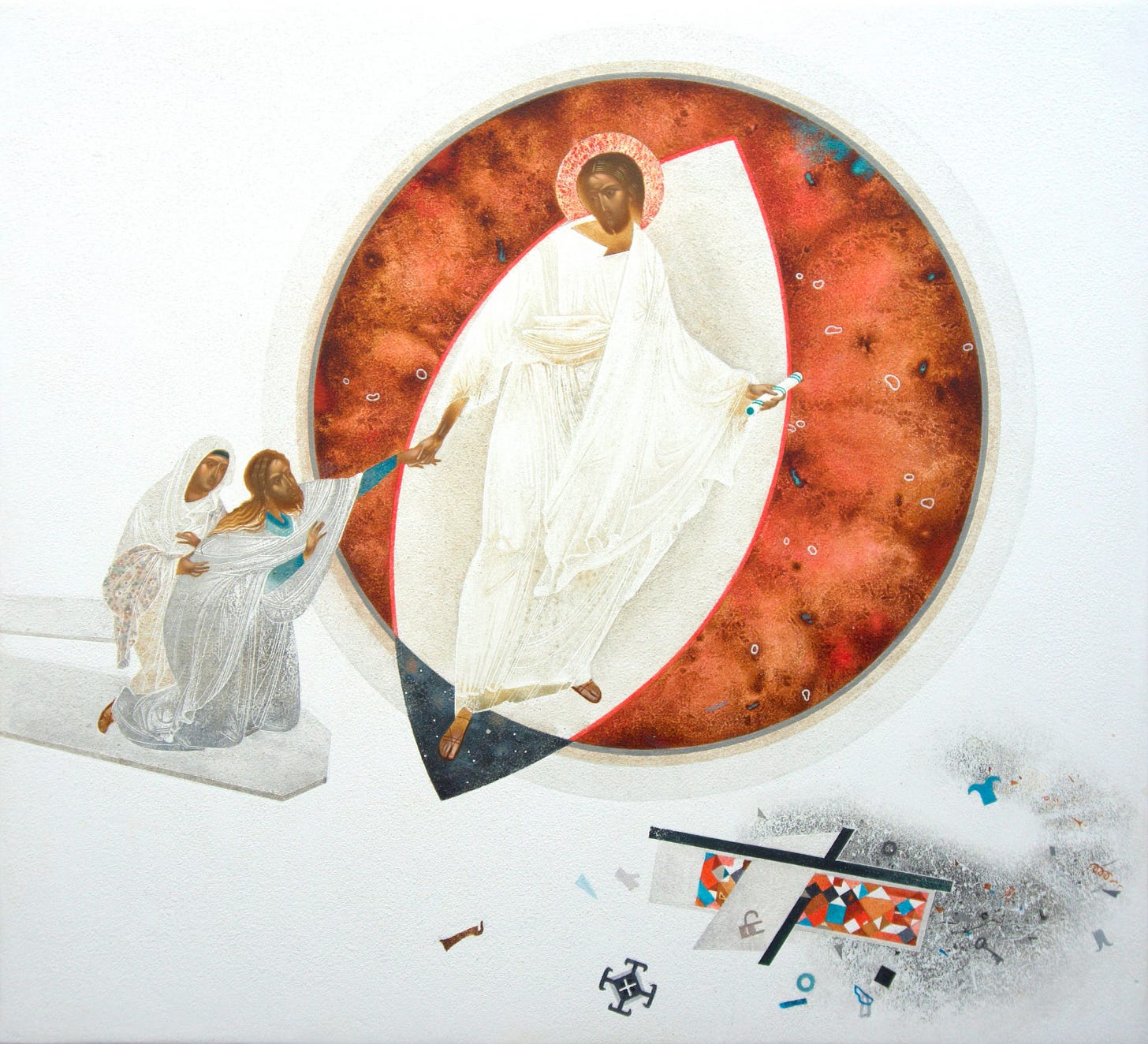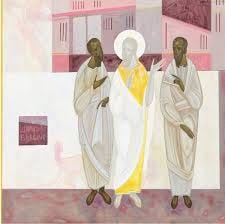Where Did the Risen Jesus's Body God?
Where is the Risen Jesus in between the Easter appearances of him?
Luke tells us that on the third day after the unseemly events on Golgotha, the Risen Jesus encountered two disciples who were on their way home in Emmaus. Strangely, Cleopas and the other unnamed disciple do not recognize their traveling companion until “he took bread, blessed and broke it, and gave it to them. Then their eyes were opened, and they recognized him…”
Coincident with the instant of their recognition, Luke reports, the Risen Christ “vanished from their sight.”
Note the difference:
Luke does not say Jesus walked off into the distance.
Nor does Luke write that Jesus decided to lodge outside of Emmaus before making his next Easter appearance in Capernaum by sea.
No, it’s: “He vanished from their sight.”
An odd body indeed.
Both the scriptures and the creeds are clear. The appearances of the Risen Jesus, such as on the one recorded in Luke 24, are decisive for the Resurrection claim of the primal church. The status of Jesus’s garden tomb is not so decisive. The tomb could have been empty while Jesus nevertheless could have been dead. Karl Barth and others even go so far as to suggest that the tomb could have not been empty and Jesus nevertheless could be said to be risen.
The appearances of the crucified, dead, and buried Jesus to his disciples are the occasion for Easter faith not the occupancy status of his resting place. Thus, a question presents itself that is all-important even if it is often unexamined.
What happened to Jesus’s body?
The Father raised the Son’s body to where exactly?
Where is the Risen Jesus in between the appearances of him?
For that matter, at Eastertide’s end when the Risen Jesus ascends to sit at the Father’s right hand in heaven whither does the Son go?
The Gospels make it clear. Between his Easter appearances, the Risen body of Jesus had no location in this world.
The Risen Jesus did not rent a room at the Super 8 in Jerusalem.
He was not glamping in Galilee.
He was not couch-surfing in Samaria.
Again, “he vanished from their sight.” But also the Risen Jesus was precisely not a ghost. He had wounds that neither festered nor healed, yes, yet he eats breakfast with his friends. He’s tangible in that, in the case of Thomas, he can make himself our object.
Of course, it’s true that the Resurrection is an event that could not have been photographed. The stone that’s been rolled away from the tomb testifies to an event that’s already happened not to the event itself. The Resurrection is not an event that could have had witnesses because the Resurrection is an event that happens to time as much as it’s an event that happens in time. Still, what’s straightforwardly clear from scripture is that the Resurrection was a bodily resurrection of the crucified Jesus.
To make it plain—
A body requires a place.
This locateability is exactly what distinguishes a body from a spirit.
Where is the place to which the Risen body of Jesus was raised?
Where is the place the Risen body of Jesus now resides?
Keep reading with a 7-day free trial
Subscribe to Tamed Cynic to keep reading this post and get 7 days of free access to the full post archives.





